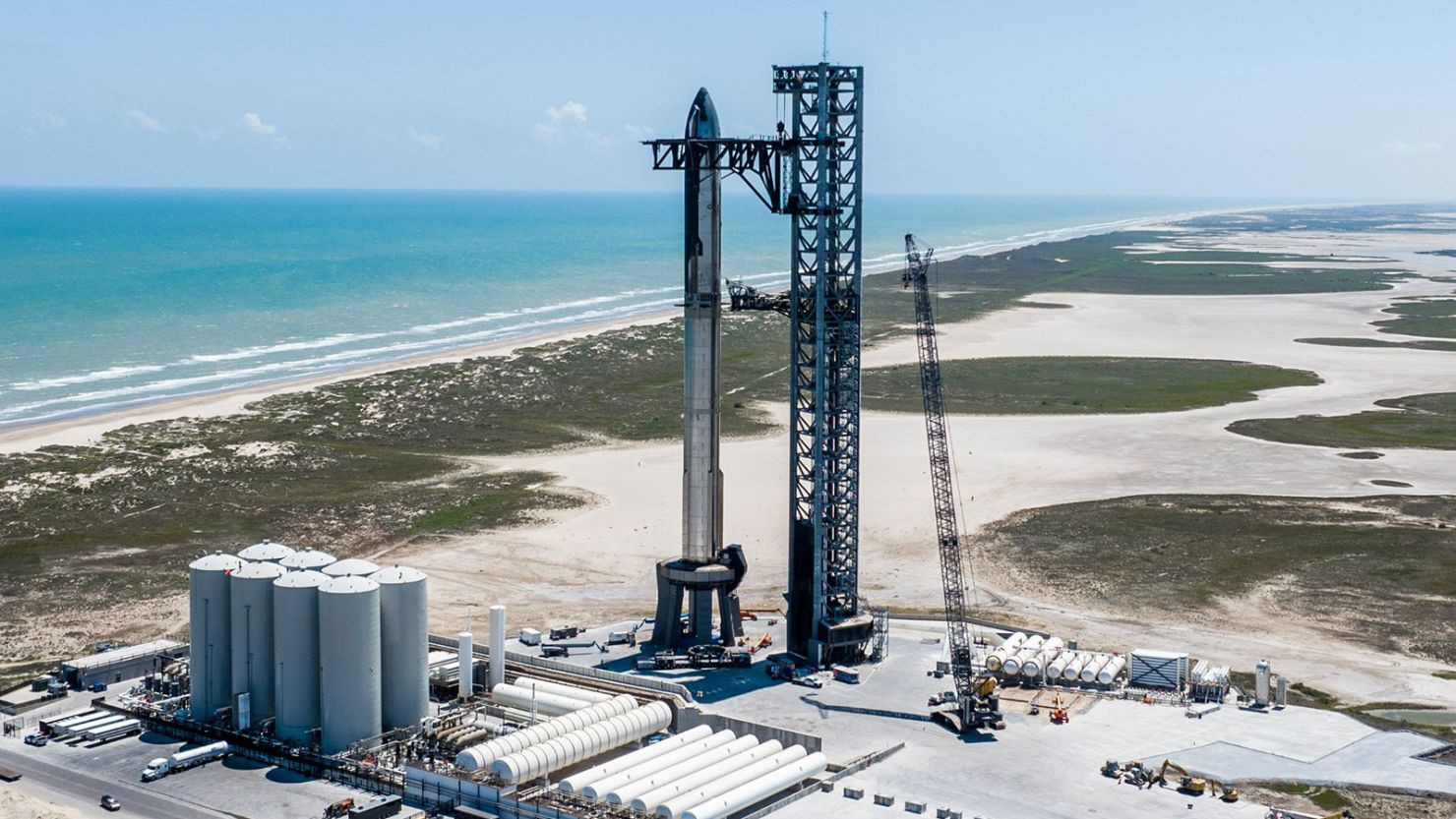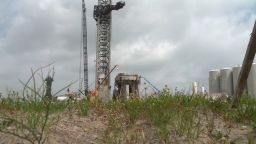The Federal Aviation Administration announced Friday it has closed its “mishap” investigation into the April SpaceX Starship test flight that ended after the rocket exploded over the Gulf of Mexico. But the regulatory agency still hasn’t given the green light for the next launch.
The FAA says the investigation “cites multiple root causes” and “63 corrective actions SpaceX must take to prevent mishap reoccurrence,” the agency said in a statement.
SpaceX has said it is ready to try to launch Starship again. The rocket is currently stacked on its launchpad in Boca Chica, Texas. But the FAA must issue a launch license, and one of the holdups has been the mishap investigation.
However, conclusion of the investigation isn’t an automatic green light. The FAA said in its statement, “The closure of the mishap investigation does not signal an immediate resumption of Starship launches at Boca Chica.”
The agency says SpaceX must complete the actions “that impact public safety and apply for and receive a license modification from the FAA that addresses all safety, environmental and other applicable regulatory requirements prior to the next Starship launch.”
FAA is not releasing the report publicly because it contains information that is proprietary to SpaceX, as well as information that is constrained by U.S. Export Control laws, according to the agency.
SpaceX CEO Elon Musk previously confirmed on September 5 that, from SpaceX’s perspective, the Starship vehicle was “ready to launch.”
This announcement came nearly five months after the Starship explosion, which took place about four minutes after its first test flight lifted off from SpaceX’s sprawling Starbase in Boca Chica. The company blamed the outcome, which it called a “rapid unscheduled disassembly,” on multiple engine failures.
SpaceX did not respond to a request for comment, nor does the company typically respond to reporter inquiries. The April launch of Starship damaged the launchpad and renewed environmental concerns after starting a 3.5-acre fire on Boca Chica State Park land.
“Impacts from the launch include numerous large concrete chunks, stainless steel sheets, metal and other objects hurled thousands of feet away along with a plume cloud of pulverized concrete that deposited material up to 6.5 miles northwest of the pad site,” the US Fish and Wildlife Service said in April.
The timing of Starship’s return to test flights is significant for a separate federal agency, NASA, which is counting on Starship to return American astronauts to the surface of the moon for the first time in more than half a century.
The mission, called Artemis III, is scheduled to lift off as soon as December 2025, but Jim Free, associate administrator of NASA’s Exploration Systems Development Mission Directorate, said in June that he’s worried the date will slide due to Starship’s delays.
“With the difficulties that SpaceX has had, I think that’s really concerning,” Free said while speaking to a joint meeting of the Aeronautics and Space Engineering Board and Space Studies Board of the National Academies of Sciences, Engineering and Medicine. “You can think about that launch date slipping probably into ’26.”
In August, Free told CNN “my level of concern is the same” after a trip to visit SpaceX’s launch site a month earlier.






